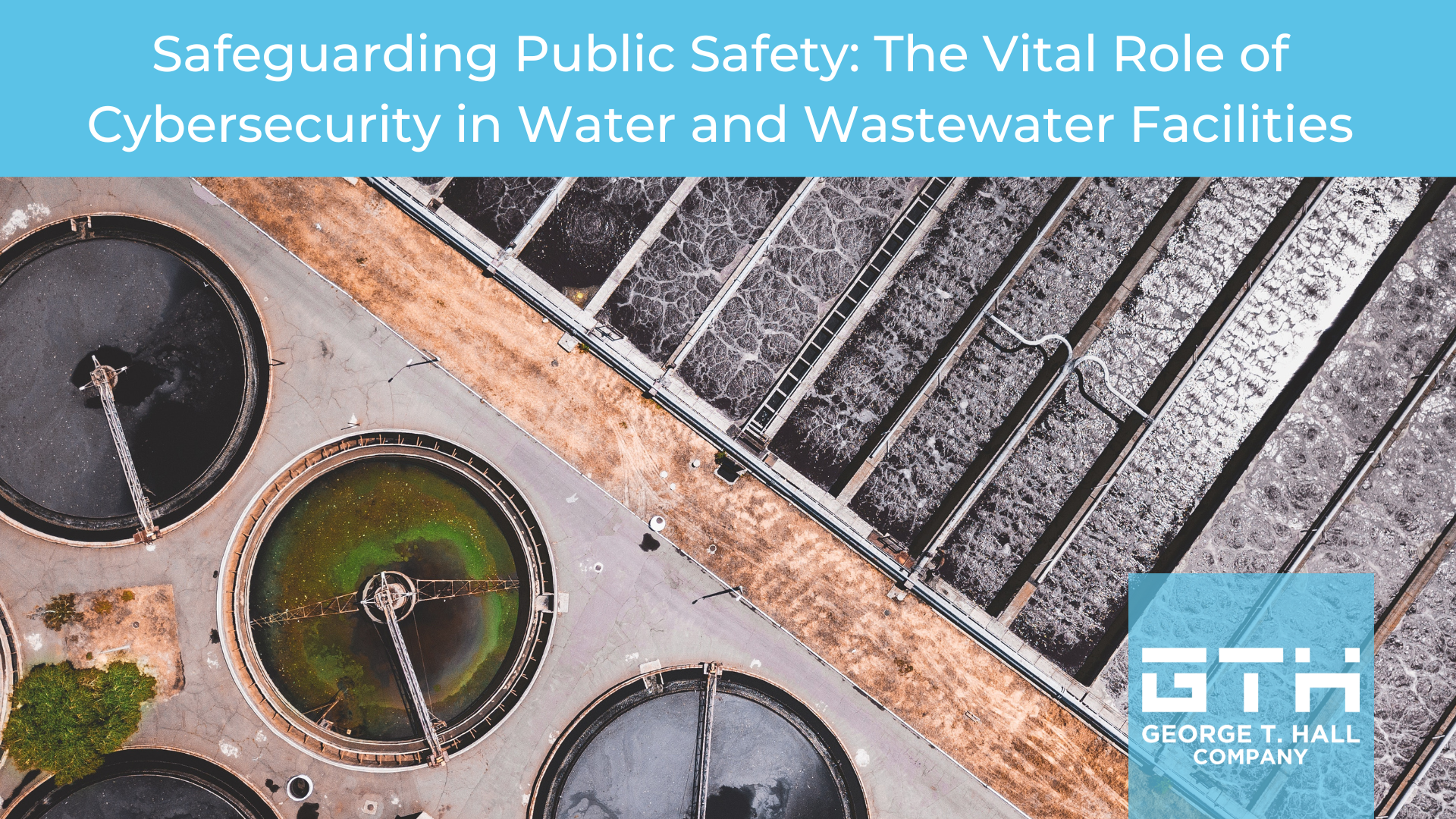Blog

Safeguarding Public Safety: The Vital Role of Cybersecurity in Water and Wastewater Facilities
Water and wastewater facilities are the backbone of any community providing essential services that directly impact public health and well-being; however, with the increasing digitization of infrastructure, the vulnerability of these critical facilities to cyber threats has become a major concern. Investing in robust cybersecurity measures is now more crucial than ever to protect public safety, maintain continuous operations, safeguard sensitive data, and ensure the overall resilience of communities.
The Importance of Cybersecurity for Water and Wastewater Facilities
- Protection of Sensitive Data
Water and wastewater facilities handle vast amounts of sensitive information, including customer data, operational details, and infrastructure blueprints. A cybersecurity breach could expose this information to malicious actors, leading to potential identity theft, financial fraud, and other forms of cybercrime.
- Ensuring Public Health and Safety
The safety of clean drinking water and proper wastewater treatment is paramount to public health. A cyberattack on these facilities could lead to the tampering of water quality, putting consumers and the environment at risk, as well as the faith and trust of the public.
- Preventing Service Disruptions and Financial Losses
A successful cyberattack could disrupt facility operations, causing service interruptions and financial losses for both the facility and the consumers. The cost of restoring operations and investigating the incident will be substantial compared to implementing cybersecurity improvements, modernization, and other upgrades.
- Protecting National Security Interests
Water and wastewater facilities are critical infrastructure and, as such, potential targets for cyber-espionage or cyberterrorism. Ensuring the cybersecurity of these facilities is essential to safeguarding national security interests.
- Securing the Supply Chain
Water and wastewater facilities rely on interconnected systems and vendors to operate efficiently. Supply chains are the main entry point for the majority of cyber-attacks. Ensuring cybersecurity throughout the supply chain is critical to prevent vulnerabilities from being exploited. Cybercriminals are continuously evolving their tactics, techniques, and procedures to breach digital defenses. Staying ahead of emerging threats requires water and wastewater facilities to aggressively update and enhance their cybersecurity measures.
Adopting Best Practices for Cybersecurity
To protect their operations and customers effectively, water and wastewater facilities should consider implementing the following best practices:
- Conduct Comprehensive Risk Assessments:
Begin by conducting thorough cybersecurity risk assessments to identify vulnerabilities, potential threats, and critical assets. Understand the specific risks that the facility faces, including the likelihood of different types of cyberattacks. This assessment will serve as the foundation for developing a targeted cybersecurity strategy and allocating resources effectively.
- Implement Strong Access Controls and Authentication:
Enforce strong access controls and authentication mechanisms to limit access to critical systems and sensitive data only to authorized personnel. Use multifactor authentication (MFA) wherever possible to add an extra layer of security. Regularly review and update access privileges to ensure they align with job roles and responsibilities.
- Regularly Update, Patch Systems, and identify Life-Cycle Upgrades:
Keep all software, operating systems, and control systems up to date with the latest security patches and updates. Vulnerabilities in deprecated technologies are often exploited by cyber attackers to gain unauthorized access. Regular updates and upgrades help protect against known vulnerabilities and reduce the attack surface.
- Educate and Train Staff on Cybersecurity:
Cybersecurity awareness training is crucial for all employees working in the water sector. Train staff on how to recognize phishing attempts, suspicious activities, and potential threats. Encourage a culture of cybersecurity awareness and make reporting security incidents easy and confidential. Well-informed employees are better equipped to defend against cyber threats.
- Develop and Practice Incident Response Plans:
Establish a comprehensive incident response plan that outlines the steps to be taken in case of a cyber incident. The plan should include procedures for identification, containment, eradication, recovery, and lessons learned. Regularly practice incident response drills to ensure that staff members understand their roles and can respond effectively in the event of a cyber incident.
By implementing these top five best practices, water sector organizations can significantly strengthen their cybersecurity defenses, minimize the risk of cyber incidents, and protect critical infrastructure and public safety. Investing in robust cybersecurity measures is not just an option; it is imperative for water and wastewater facilities. Protecting public safety, maintaining essential services, safeguarding sensitive data, and ensuring the overall well-being of communities heavily rely on strong cybersecurity practices. By complying with regulations, updating systems regularly, and adopting best practices, these facilities can fortify their defenses against evolving cyber threats. Only through collective efforts can we secure our vital infrastructure and ensure a safer, more resilient future for our communities.
References: EPA Cybersecurity for the Water Sector which includes “Cyber Security 101 Training for Water Systems https://www.epa.gov/waterresilience/epa-cybersecurity-water-sector
RELATED POSTS
George T. Hall (GTH) is proud to announce its new designation as Preferred System Integrator with ...
In the world of industrial and commercial applications, efficiency is paramount. To achieve optimal...
For nearly a century, George T. Hall Company has remained dedicated to delivering top-quality products...




